Concerto for Percussion Solo (piano reduction)
-
Ships in 3 to 4 weeks
Details
Description
SKU: CN.05382
Composed by Gary Ziek. Concertos. Piano reduction. Duration 14:20. Published by C. Alan Publications (CN.05382).This concerto is in three connected movements and features the soloist on a variety of instruments, including marimba, vibraphone, bells, and crotales and a large percussion battery with two snare drums, multiple toms, brake drums, and bass drum.
The Concerto for Percussion Solo and Wind Ensemble was composed in January of 2001 as a showcase for the talents of percussionist Scott Herring. The concerto is in three connected movements and features the soloist on a variety of instruments, including marimba, vibraphone, bells, and crotales. A large percussion battery with two snare drums, multiple toms, brake drums, and bass drum is also used. The first movement, March, utilizes a quasi five-part rondo form. The movement starts with a solo snare drum, with the ensemble providing melodic interjections. The introduction builds to the first solo marimba entrance. A left hand ostinato leads to a melodic figure which alternates between 6/8 and 4/4. A short snare drum solo sets up the middle section, in which the soloist and ensemble trade musical ideas. The multi-meter passage returns, with the soloist embellishing ensemble melodic figures. An abrupt modulation leads to the final section, which echoes the opening ideas of the movement. March ends with the soloist back on the snare drum, as it comes quietly to its conclusion. The concerto immediately segues into the second movement, Meditation, which begins with the ethereal sound of multiple sets of wind chimes. As the movement progresses, the soloist plays long, reflective lines over a simple ensemble accompaniment, on various combinations of keyboard percussion instruments. The movement builds to a moment of triumph, before returning to its initial contemplative state. Fantasia (a free flight of fancy) immediately shatters the previous mood. A loud, cacophonous ensemble accompaniment provides a charged atmosphere for the soloist to utilize the percussion battery. A short melodic section, noble in character, leads to the initial climax of the final movement. The atmosphere abruptly changes again, as the ensemble and soloist embark upon a fast, violent new section. Musical lines are furiously exchanged, leading up to a thunderous percussive display. The mood is suddenly tinged with blues and jazz influences, letting the soloist function in a manner reminiscent of a drum set player. The final section of Fantasia begins with an unaccompanied marimba solo, played at breakneck speed. The ensemble begins to gradually join the soloist, as the movement build to a final, fortissimo climax.
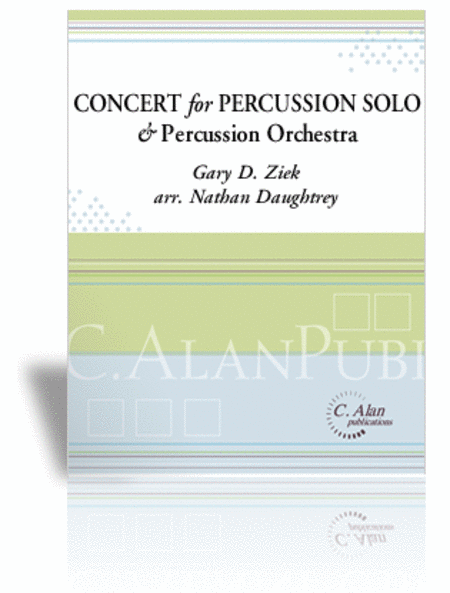
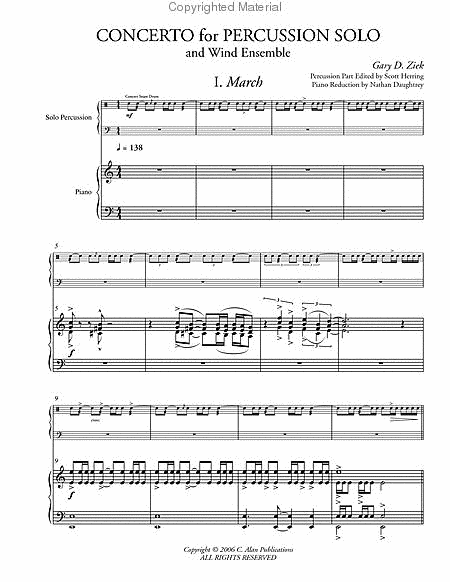
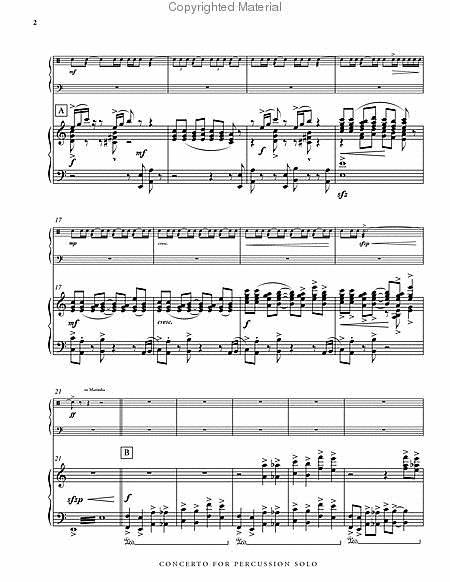
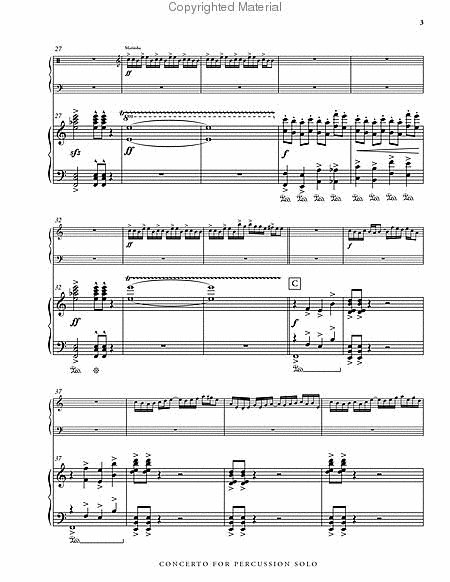
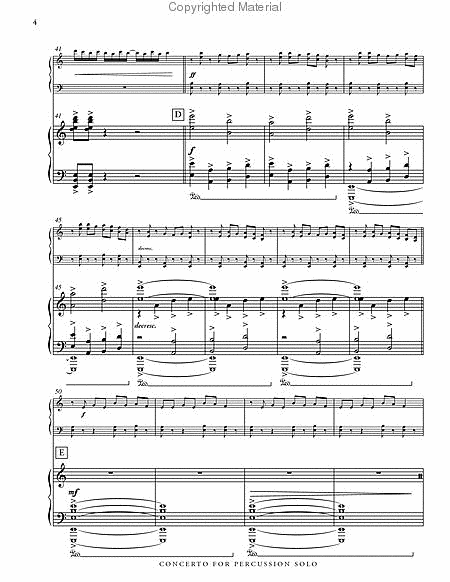
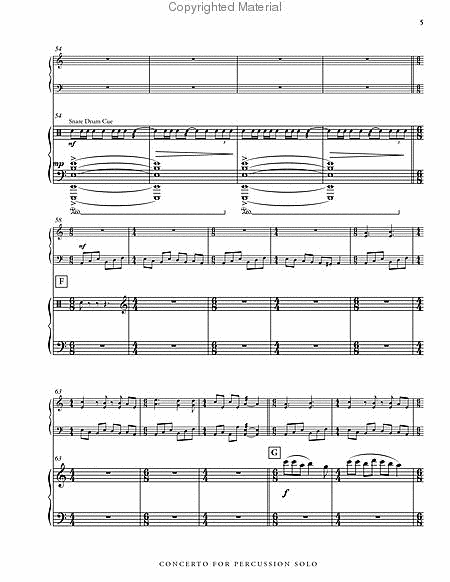
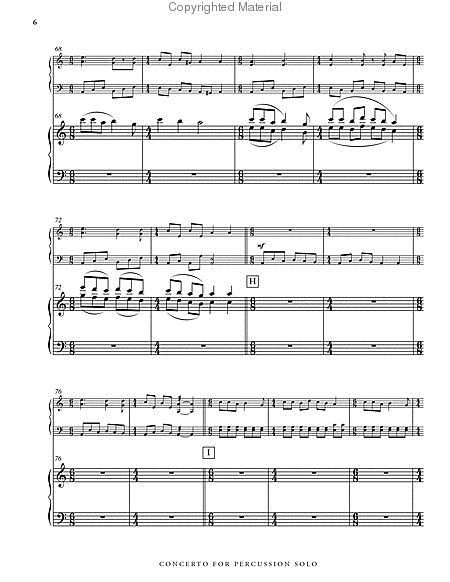
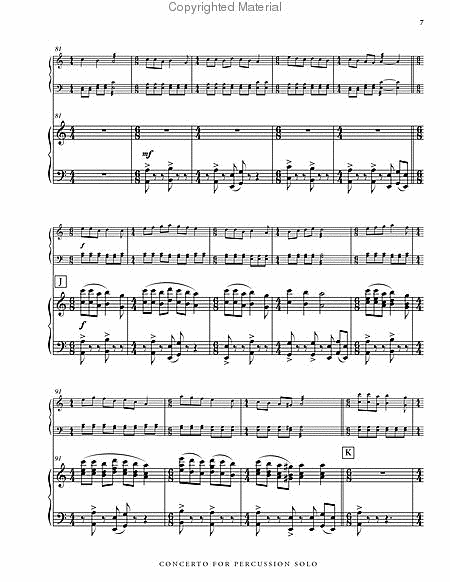
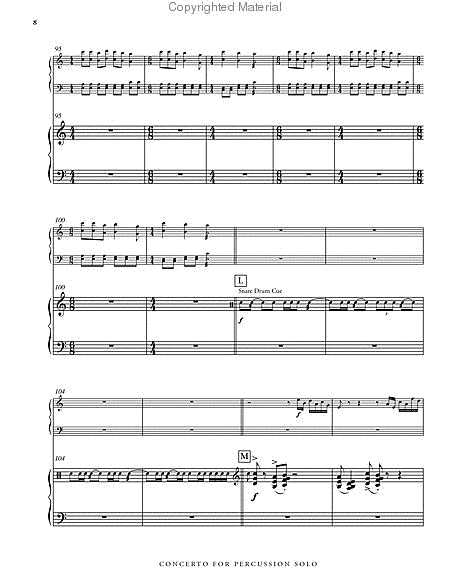
 Share
Share